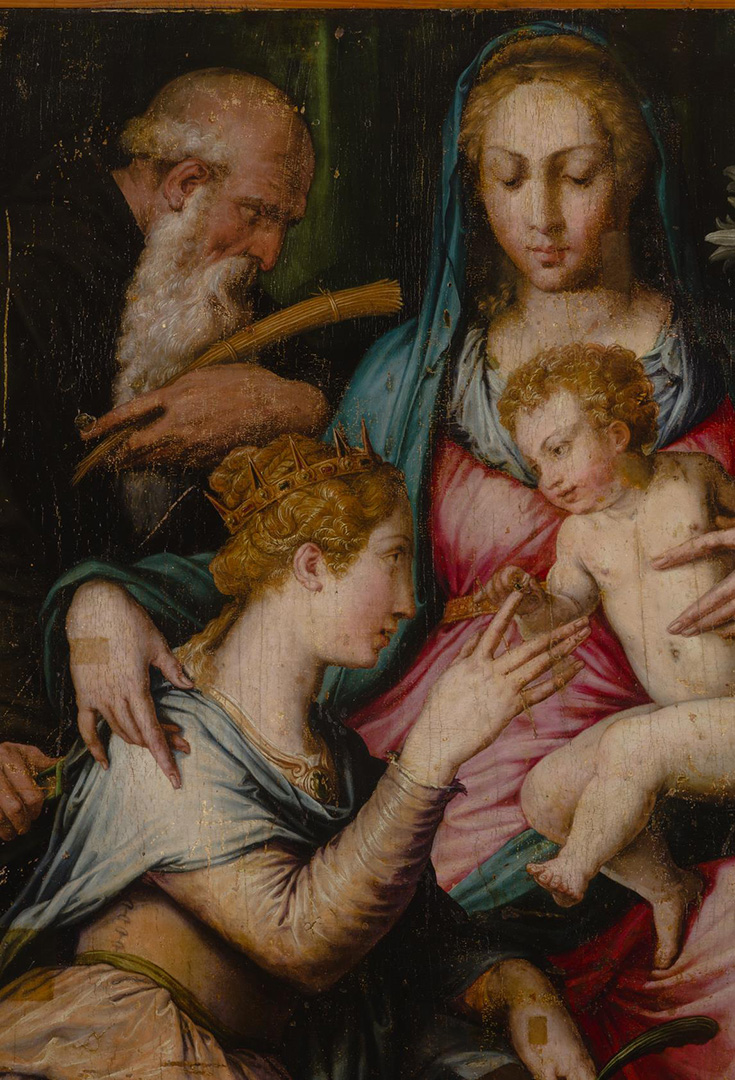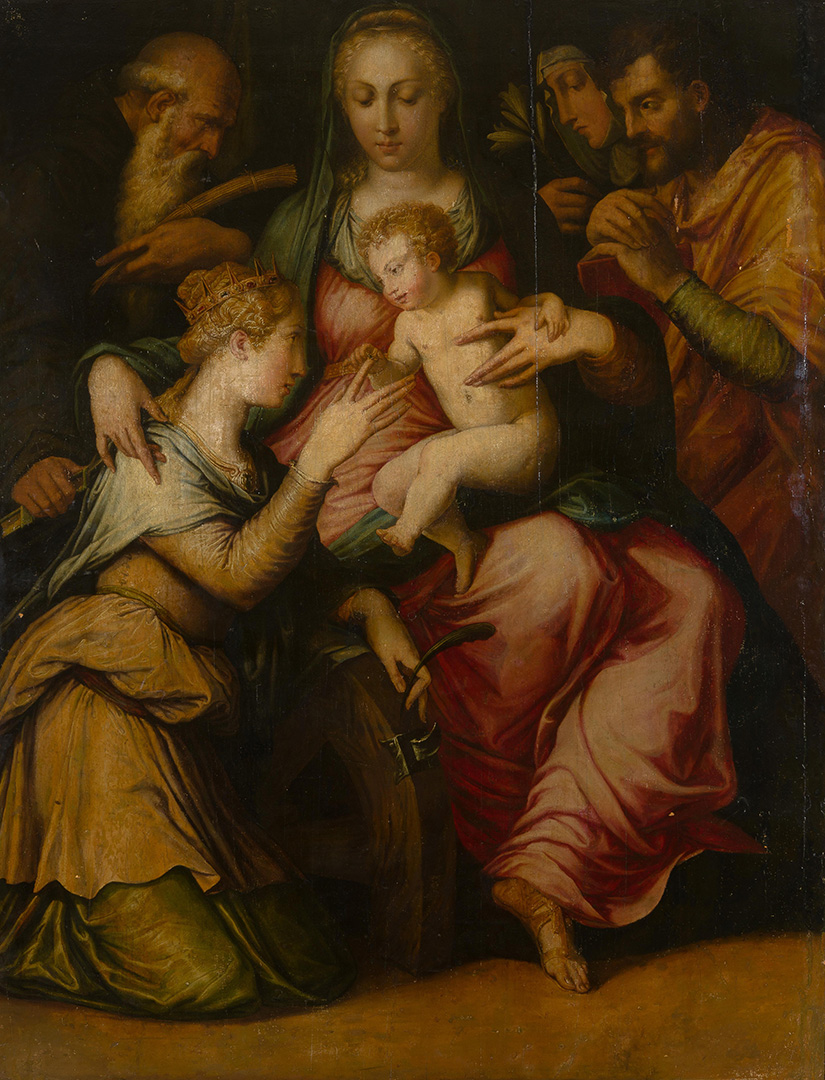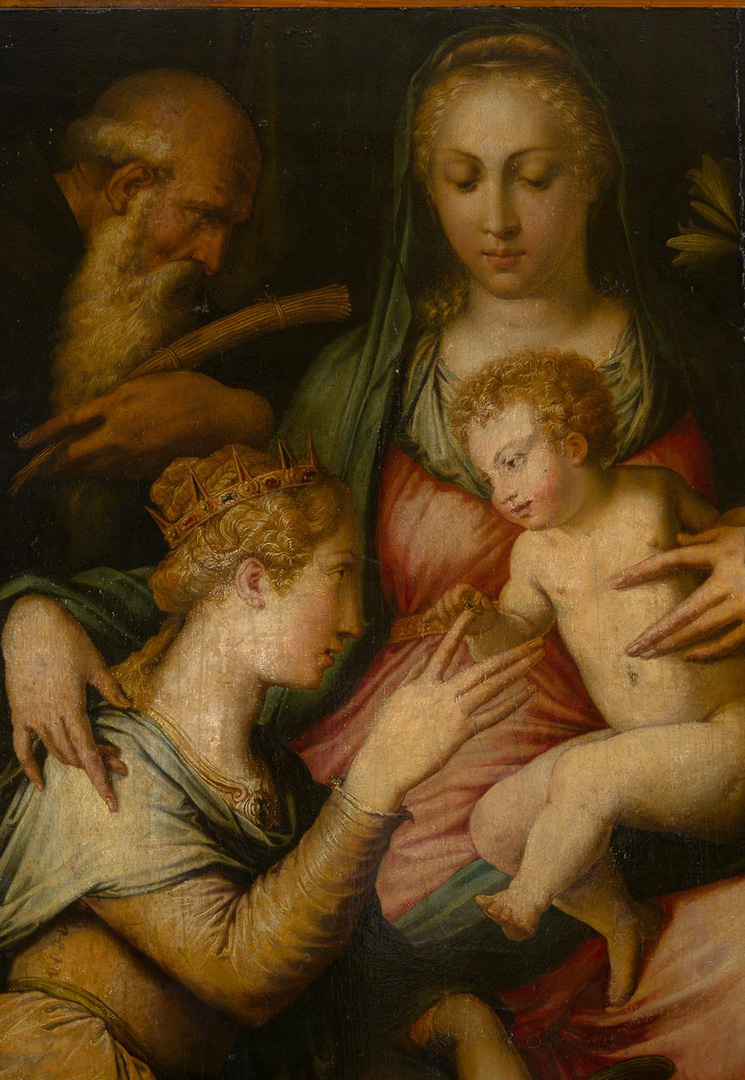Collaboration between the State Hermitage and HEINEKEN continues
For a period of 16 years now, the brewing company HEINEKEN has been one of the State Hermitage’s long-standing partners.
In 2021, despite the difficulties connected with overcoming the consequences of the coronavirus pandemic, HEINEKEN is participating in the project to restore Giorgio Vasari’s painting The Mystic Marriage of Saint Catherine from the collection of the State Hermitage. This is not the first experience of the kind for this partner of the State Hermitage – in 2017 the company participated in the restoration of Bartholomeus van der Helst’s painting Nieuwmarkt in Amsterdam.
“Our collaboration with the Hermitage is developing in two main directions – the rational use of resources and the preservation of cultural heritage. The restoration of Giorgio Vasari’s Mystic Marriage of Saint Catherine provides us with the opportunity to again turn to the theme of bringing art closer to the wider public. We hope that after restoration this work by a celebrated master from the State Hermitage collection will be displayed in the Hermitage–Amsterdam Exhibition Centre as part of some future exhibition,” Alexei Vorobyev, Director of Corporate Relations for HEINEKEN in Russia, said.
The famous Italian artist Giorgio Vasari painted The Mystic Marriage of Saint Catherine in the mid-15th century, and it is the only work by the Tuscan artist in the collection of the State Hermitage. The image of Saint Catherine of Alexandria is inseparably associated with Saint Petersburg. The chivalric Order of the Great Martyr Catherine was established by Peter the Great in 1714, and its first head was the Tsar’s wife, who would become Empress Catherine I. Empress Catherine II – Catherine the Great, the founder of the Hermitage –was a member of that order.
The picture came into the Hermitage in 1920, from the Society for the Encouragement of the Arts, which had earlier received it as a gift from Grand Duchess Maria Nikolayevna, the daughter of Emperor Nicholas I.
The work, which was painted on a wooden panel, has numerous minor losses across its whole surface that were restored and touched up on several occasions in the 18th and 19th centuries. As a result, at the present moment the entire surface of the original paintwork is covered with layers of overpainting that have changed colour and also varnishes of various dates that strongly distort the colour scheme of the work.
The project envisages work to be carried out in various stages, beginning with the photographic recording of the picture, the carrying out of physical, chemical, infrared and X-ray studies of the work. The next stage will be to tackle the layer of varnish and paints, which needs to be reduced in thickness and evened out across the whole surface. Then comes work to reinforce the structure of the picture and to restore the transparency of the layer of old varnish. The final stage will be the application of fresh lacquer and making good the losses of original paintwork.
The restoration is being carried out by the artist-restorer Irina Gefding in the Laboratory for the Scientific Restoration of Tempera Painting under the guidance of its head, Igor Permiakov. The scholarly supervisor of the project is Zoya Kuptsova, a Keeper in the Department of Western European Fine Art.
The results of the restoration project will be presented in late 2021.
The project is partnered by the Hermitage 21st Century Foundation.


